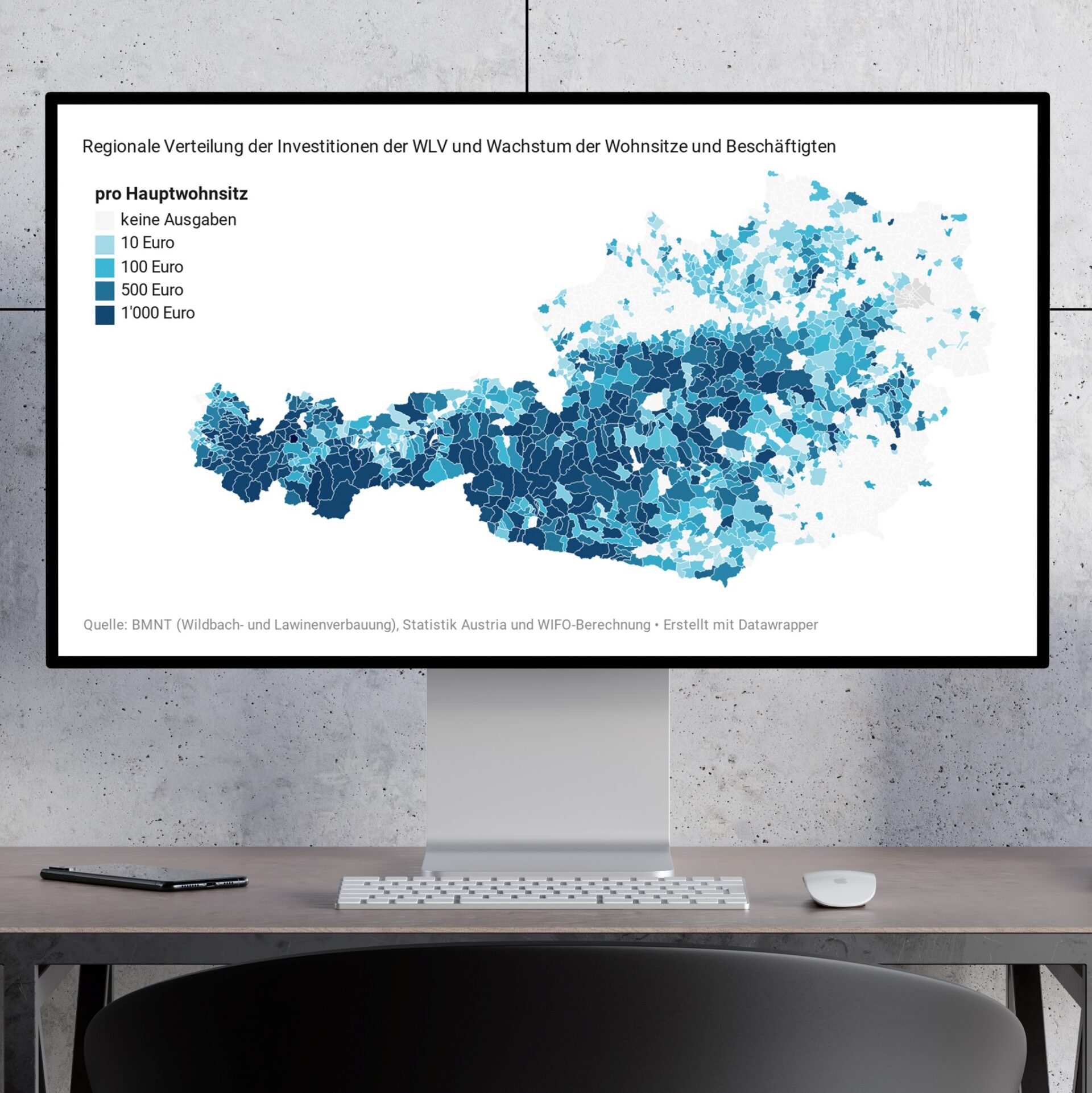
Big Data in Natural Hazard Management
Floods, avalanches, debris flows and rockfalls are hazards with a high damage potential in Austria due to its topography. A special administrative unit – WLV – makes investments to prevent damages in settlement areas. In 2018, 152 million € were spent to prevent major damage and to implement measures in the event of damage. The immediate benefit of these services is obvious. However, little research has been done on the long-term effects of these measures on the economy and population in the regions concerned.
This is because it requires a wealth of information in as small a space as possible. Such data were used for the first time in a WIFO study by combining data sets from WLV with grid data from Statistics Austria. For each 250 by 250 metre area in Austria, information on the companies located there, the main and secondary residences, and the investments made there for the period from 2001 to 2011 were processed. These grid data were also overlaid with the hazard zone maps of the WLV in order to determine the extent of the hazard of torrents and avalanches for each grid. This makes it possible to measure the impact of the investments on the dynamics of population size and economic activity, depending on the risk potential.
A major object of investigation in the study is the reaction of companies and private households to increased risk potential in their environment. With these precise data it can be shown that the location in a highly vulnerable area reduces employment in the long term and lowers the number of main residences. High-risk zones are avoided by companies and jobs are consequently relocated. Only the number of secondary residences remains unaffected by the threat. The fact that information about the hazard situation influences the behaviour of local companies and residents shows that the hazard plans of the WLV are an effective instrument to prevent damage. The study also shows that investments by WLV strengthen the local economy. Expenditure amounting to 1 million € leads to an average increase of 11 main and 25 secondary residences and also results in job creation. In economic terms, the construction industry and commerce are the main beneficiaries of the investments.
For an interactive map (in German) showing the regional distribution of WLV's investments and the growth of residences and employees, please click here.

